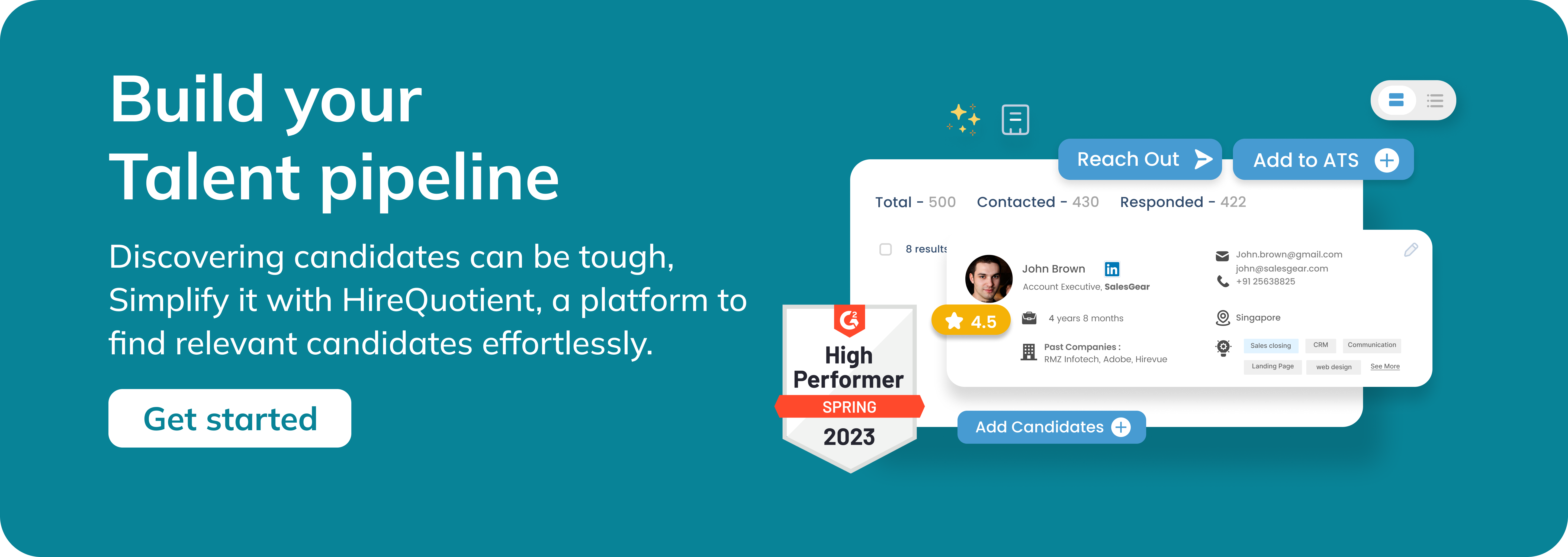Exempt and Non-Exempt Employees: What’s the Difference? (with FLSA Guidelines)
Published on June 5th, 2023
The classification of exempt and non-exempt employees influences various factors of the job, including salary, work schedule, and eligibility to gain overtime pay. Here’s the blog that would help you understand what is the difference is between exempt and non-exempt employees, what they are, and what it means to the company.
So, let’s begin with,
How are Exempt vs. Nonexempt Employees classified ?
The employees who aren't eligible for overtime pay under the FLSA (Fair Labor Standards Act) are known as exempt employees. These exempt employees are exempted based on their salary, the duties they perform, and the method of compensation.
In parallel to this, Non-exempt employees are eligible for overtime pay, and their hourly wage must meet minimum wage requirements offered by state and federal law.
Exempt vs. Non-Exempt Employees: Key Differences
| Sr no. | Category | Exempt | Non-Exempt |
| 1 | Compensation | Exempt employees are typically salaried and receive a fixed amount of compensation, regardless of hours worked. | Non-exempt employees are generally paid hourly and receive overtime pay for any hours worked over 40 in a week. |
| 2 | Job Duties | Exempt employees typically work in executive, administrative, or professional roles involving significant non-manual work. | Non-exempt employees often hold labor-intensive positions that involve manual work. |
| 3 | Working Hours | Exempt employees are not bound by the FLSA's hourly limits and may work beyond the standard 40-hour workweek without receiving overtime pay. | Non-exempt employees are entitled to overtime pay under FLSA regulations for hours worked beyond 40 per week. |
| 4 | Benefits | Exempt employees may be eligible for full-time benefits such as health insurance, paid vacation, and sick leave, regardless of hours worked. | Non-exempt employees may qualify for benefits only if they meet a certain number of work hours.
|
| 5 | Work Schedule | Exempt employees may have more flexible schedules but are still expected to fulfill their job responsibilities. | Non-exempt employees often have a fixed schedule with strict tracking of their working hours. |
| 6 | Job Security and Stability | Exempt employees may have a greater sense of job security and a more stable position within the company due to their roles and responsibilities. | Non-exempt employees may have lesser security in comparison to exempt employees. |
| 7 | Common Roles | Exempt positions include executives, managers, professionals, and certain administrative roles. | Non-exempt roles are typically for hourly workers such as administrative assistants, customer service representatives, and manual laborers.
|
FLSA Guidelines for Exempt Status
The Fair Labor Standards Act (FLSA) is your first step in determining exemption status to analyze the FLSA requirements for exemption. An employee must meet the following criteria to be considered exempt, which include -
Job Duties and Responsibilities: Exemption is often tied to job duties, categorized under executive, administrative, or professional exemptions. For instance:
- Executive: Manages two or more employees, authority to hire/fire, uses discretion and judgment.
- Administrative: Performs office/non-manual work related to business operations with decision-making authority.
- Professional: Requires advanced knowledge of specialized industries.
Salary Basis and Level: The employee must receive a fixed salary not subject to reduction based on work quality or quantity. The minimum salary threshold, as of January 1, 2020, is $35,568 annually or $684 per week.
State Laws and Nuances
Some states have stricter exemption rules than the federal FLSA. Always verify both federal and state laws to remain compliant. The unique wage and hour laws are -
Alaska: The new minimum pay rate to be eligible for exemption is $952.80 per week, which is double the state minimum wage for a 40-hour workweek due to an increase in the minimum wage rate.
California: Since January 1, 2025, California's minimum wage rate has increased. Employees must now make at least $68,604 annually (i.e., $1,320 per week) to be eligible for an exemption. Unless the worker is employed in the computer software industry, where they have a special salary rate that opens in a new tab ($56.97 per hour or $118,657.43 per year) to be eligible for exemption. To know more about these rules, read Exempt Employees in California
Colorado: In 2025, the minimum wage required to be eligible for exemption was raised to $1,086.25 per week by the state's Interpretive Notice & Formal Opinion (INFO) #1. To be eligible, highly technical computer workers must also make this rate, which is $34.07 per hour, either weekly or hourly. Furthermore, regardless of the number of hours worked, an exempt employee's pay rate must always equal or surpass the federal and state minimum wage rates. To know more about these rules, read Exempt Employees in Colorado
Maine: Employees need to make $845.21 a week. Whether an employee is exempt or not depends on their duties, not on whether they receive a wage.
New York: To be exempt from overtime compensation, executive and administrative staff in New York must be paid at least 75 times the state minimum wage, or 1,161.65 per week. Upstate workers may also be exempt if their weekly income is $1,237.50. In this state, there is no minimum wage needed for "professional" workers (as determined by a job duties test) in order to be exempt. To know more about these rules, read Exempt Employees in New York
Washington: Salaried EAP workers must make 1.25 times the new minimum pay rate to be excluded as of July 1, 2020. After that, employees must meet specific pay thresholds depending on the size of their firm every January 1 till 2028.
The rates as of right now for 2025 are:
- For organizations with 50 or fewer workers: double the minimum wage ($1,332.80 per week).
- For companies with 51 or more employees, 2.25 times the minimum wage ($1,499.40 per week).
- However, computer employees are required to make 3.5 times the minimum wage, or $58.31 per hour (opens in a new tab).
To know more about these rules, read Exempt Employees in Washington state
Implications of Misclassification
Incorrect classification can lead to legal issues, unpaid overtime claims, and penalties. Understanding these categories helps ensure fair pay and legal compliance.
Tips for Properly Categorizing Employees
- Review job descriptions to identify whether duties meet exemption requirements.
- Confirm salary levels to determine compliance with FLSA thresholds.
- Track hours worked for non-exempt employees to ensure correct overtime pay.
- Always consider legal guidance when making classification decisions.
Impact on Employers
Employers are responsible for properly classifying employees. Misclassification can lead to:
- Back pay for unpaid overtime
- Fines and legal fees
- Damaged reputation
Thus, it's crucial to stay updated on FLSA changes and state labor laws.
Leverage EasySource to Find the Right Talent
Finding the right talent—especially for exempt and non-exempt roles—has always been a time-consuming and often frustrating process. But what if building a strong talent pipeline took just a few clicks? Enter EasySource—the world’s first fully automated talent-sourcing tool that’s redefining how recruiters find and engage top-tier candidates.
Whether you're hiring for exempt professionals or non-exempt positions, EasySource makes the process effortless. With AI-powered filters like location, skills, education, experience, and U.S. work authorization, recruiters can instantly zero in on the most relevant candidates—no more wasting time on unqualified profiles or endless resume reviews.
But EasySource doesn’t stop at intelligent filtering. It’s packed with powerful integrations, including ChatGPT and Generative AI, enabling recruiters to automatically craft and send highly personalized messages across platforms like LinkedIn. This means you can reach out to top candidates with tailored communication, at scale, without lifting a finger.
Looking to amplify your LinkedIn sourcing? EasySource seamlessly integrates with it, helping you discover and engage with standout talent faster than ever before. Say goodbye to manual search, repetitive tasks, and resume fatigue. With EasySource, you get more than just automation—you get a smarter, faster, and more human approach to hiring.
In today’s competitive talent market, speed, precision, and personalization are everything. EasySource delivers all three, making it the ultimate game-changer for modern recruiters.
Conclusion
Understanding the difference between exempt and non-exempt employees is crucial for both employers and employees alike. While the criteria for classification can be complex, knowing the key factors—job duties, salary basis, salary level, and applicable state laws—can help ensure legal compliance and fair compensation. And when it comes to sourcing the right candidates, tools like EasySource can significantly simplify and enhance your recruitment efforts. If you're ever uncertain about classification, consult with an employment attorney to avoid costly mistakes and ensure your workforce is correctly classified.
Authors

Soujanya Varada
As a technical content writer and social media strategist, Soujanya develops and manages strategies at HireQuotient. With strong technical background and years of experience in content management, she looks for opportunities to flourish in the digital space. Soujanya is also a dance fanatic and believes in spreading light!
Hire the best without stress
Ask us how
Never Miss The Updates
We cover all recruitment, talent analytics, L&D, DEI, pre-employment, candidate screening, and hiring tools. Join our force & subscribe now!
Stay On Top Of Everything In HR


